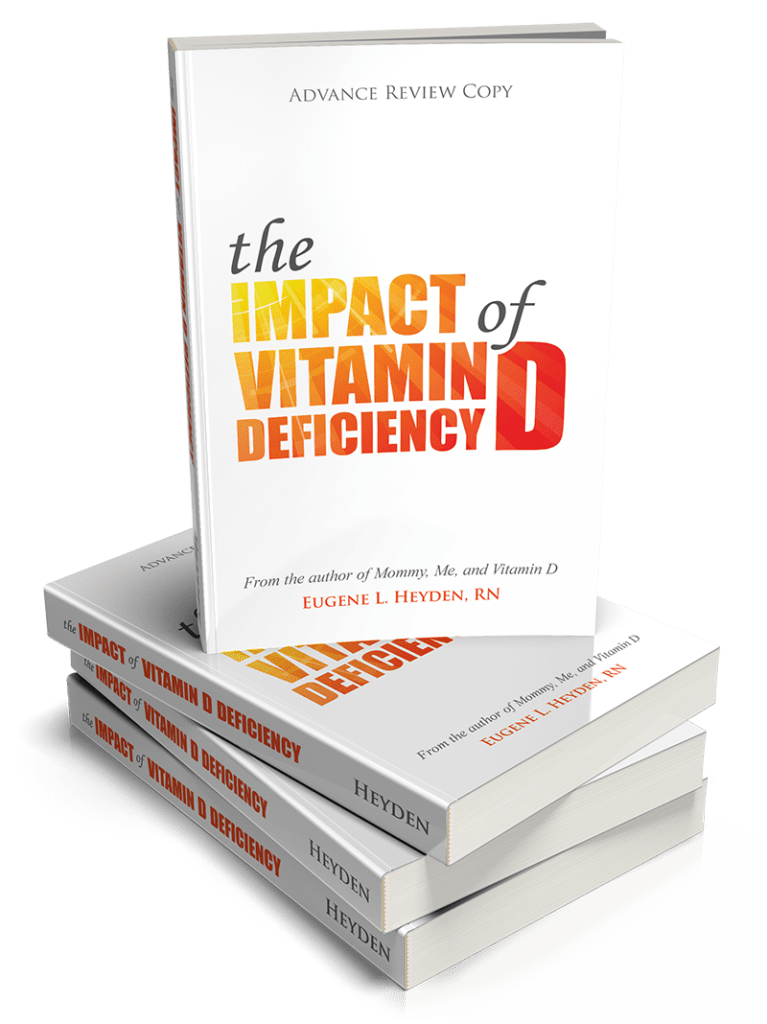 Chapter 1
Chapter 1
Vitamin D: A natural history
“Vitamin D is one of the oldest hormones that have been made in the earliest life forms for over 750 million years.” ~Holick, 2003
“In terms of human history, humans were not confronted with vitamin D deficiency until the industrial revolution began.” ~Holick, 2003
“Calling vitamin D a “vitamin” is something of a misnomer. Although the name is still used for historical reasons, vitamin D is more properly classified as a secosteroid because it consists of a cholesterol backbone and exerts steroid-like effects throughout the body, directly affecting the expression of over 1000 genes through the nuclear vitamin D receptor.” ~Cekic et al., 2011
Although I am normally compelled to reference just about everything I write (or no one will believe me), in this first chapter I will forgo the references, as the basics of vitamin D are so well established. But later, as we get down to business, I will reference everything. So without further ado . . .Vitamin D has been around for a very long time; it was perhaps the first true hormone in continuous use on planet earth. And it was free, freely derived from the sun. The single-celled creature created it for personaluse in many of its metabolic activities. Then along came a hungry multicelled creature that ate the single-celled creature. And, driven by the need of some creatures to eat other creatures in order to survive, vitamin D became a hormone that could be passed along from creature to creature within the food chain, a hormone useful to the metabolic processes of the one who has not yet been eaten.
Somewhere along the way, along came the hungry human. As luck would have it, the human saw a fish. And so the human ate the fish that ate other little fishes that ate the multi-celled creatures that ate the single celled creatures. In this manner the human was able to obtain an important ingredient, a hormone if you will, that somehow became necessary to sustain life. But the food chain was just one way to get this hormone. Nudity was another. So, like many other creatures both big and small (and naked), humans were able to obtain vitamin D in abundance by exposure to the sun. Eventually, nudity gave way to clothing (thank god!), and still mankind was able to get plenty of vitamin D, by both diet and sunlight exposure.
So, for what seems like forever, the human race obtained plenty of vitamin D to meet its needs. Then came the industrial revolution, and boy did we get into trouble. And then came the dermatologists with truckloads of sunscreen, and boy did we get into even more trouble. In the context of reduced exposure to sunlight and changes in diet, humanity is now faced with a host of diseases that are related, in part, to the lack of vitamin D; related, in part, to an immune system that is compromised; related, in part, to a medical profession that just can’t seem to wrap its mind around this simple truth: Vitamin D must be in adequate supply or people will show up in droves to get drugs to treat diseases that are related, in part, to vitamin D deficiency. Multitudes will suffer. Many will die. That is why I wrote a certain little book about vitamin D.
How vitamin D became so essential to our musculoskeletal system, to our nervous system, to our immune system, even to the hair we grow on our head, is indeed somewhat of a mystery. Many a physician is still waiting for all the details to be worked out before venturing forth and paying very close attention to this vitamin, this hormone, the one we call vitamin D. Fortunately, things are beginning to change. But, be aware, your physician may not be all that into vitamin D, in addition to all the other things he or she is not all that into. I am speaking in generalities, of course. Let’s hope that your physician is very knowledgeable in the issues that surround vitamin D and its relationship to the diseases that he or she sees each and every day. But you are clueless, probably, so I will need to get you up to speed.
Let’s start with the skin. The skin is really dead. It is the under-the-skin skin that is important to our discussion. Here we find living tissue containing all sorts of things, including cholesterol. As with so many other hormones, cholesterol is the backbone of the vitamin D molecule. Sunlight, specifically the UVB wavelength, has the capacity to displace an electron from the cholesterol molecule, and a hormone is born. This altered cholesterol molecule no longer “fits in” with its neighbors (it must look kinda different) so it is forcibly evicted and eventually finds its way to the liver where it is stored, processed, and sent forth as a prohormone to the kidney or to one of many other organs, tissues, and cells where it is converted by an enzyme called 1-alpha-hydroxylase into its active form.
While in its active form, called calcitriol or 1,25(OH)₂D₃, vitamin D joins up with a receptor called the VDR and the magic happens. Up to 1000 genes or more can respond, orchestrating genetic events that promote health and resistance to disease. End of story.
So now you know the natural history of vitamin D. As we continue, keep in mind that vitamin D is actually a hormone, a vital hormone. Please keep in mind that you, too, have a natural history, one that is currently in progress. Let’s try to make it a lengthy one, one that is a relatively smooth ride. This book should help.